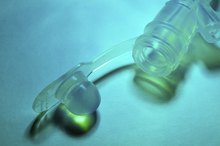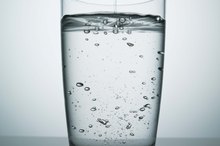Isocal Nutrition Information
Disease, trauma, or premature birth may inhibit an individual's ability to ingest food by mouth. Enteral nutrition or tube-feeding is an effective method of delivering sufficient calories and nutrients to individuals such as cancer patients or burn victims, among others 2. Isocal, a specially designed liquid formula, is used in tube-feeding to meet the energy and nutrient requirements of an individual 1.
Enteral Nutrition
Tube feeding bypasses the normal route of ingesting food through the mouth and delivers food directly to the stomach or bowel. A specialized feeding tube is inserted through the nasal cavity to the stomach or is surgically placed through the skin into the stomach or bowel. A liquid food mixture is administered through a port on the free end of the tube during feedings. In general, feeding tubes cause no pain and are easily hidden under clothing. Tubes last approximately six months before needing replacement, according to the Oral Cancer Foundation.
- Tube feeding bypasses the normal route of ingesting food through the mouth and delivers food directly to the stomach or bowel.
- A specialized feeding tube is inserted through the nasal cavity to the stomach or is surgically placed through the skin into the stomach or bowel.
Isocal Nutrition Facts
Polycose Nutrition Information
Learn More
Isocal is an isotonic, lactose-free tube-feeding formula 1. It contains 1,060 calories in a single serving size of 1,000 mL, or just over 4 cups, according to the website Fitbit. Tube-feeding formulas are high in fat, protein, carbohydrates and vital nutrients and minerals to ensure individuals are meeting daily nutritional requirements. A single serving contains 68 percent daily value of fat and protein and 45 percent daily value of carbohydrates. It contains more than the recommended daily value of vitamin C, riboflavin, vitamin B-12, niacin, vitamin B-6, vitamin E and pantothenic acid and is sufficient in a variety of other nutrients and minerals.
- Isocal is an isotonic, lactose-free tube-feeding formula 1.
- Tube-feeding formulas are high in fat, protein, carbohydrates and vital nutrients and minerals to ensure individuals are meeting daily nutritional requirements.
Dosage and Administration
Isocal comes as a ready-to-use formula that requires no mixing or preparation before feeding 1. It should be administered at room temperature as a slow, continuous drip according to the rate per hour prescribed by a physician, according to the website RxMed. Adjustments to the rate are often made to ease unwanted side effects or as needed due to the patient's health. The feeding tube should be checked for cleanliness. Isocal can be administered through a pump that controls the rate of delivery or through a “gravity feeding” method in which a bag is filled with Isocal and hung above the patient, allowing the formula to slowly drip through the feeding tube, according to the Oral Cancer Foundation 1. Regular flushing of the tube is recommended to prevent clogging.
Side Effects
What Are the Different Types of Feeding Tubes?
Learn More
The most common side effects during enteral feeding include diarrhea, constipation or nausea and vomiting. Symptoms often occur when beginning tube-feedings as the body adjusts to the formula. Other potentially more serious side effects include pulmonary aspiration in which liquid enters the trachea or lungs, dehydration, abnormal blood sugar levels and high or low levels of vitamins and minerals, according to the University of Washington. Speak with a doctor about possible side effects and actions to take.
- The most common side effects during enteral feeding include diarrhea, constipation or nausea and vomiting.
- Other potentially more serious side effects include pulmonary aspiration in which liquid enters the trachea or lungs, dehydration, abnormal blood sugar levels and high or low levels of vitamins and minerals, according to the University of Washington.
Precautions
It is important to keep Isocal solutions refrigerated when not in use and opened, room temperature solutions should be used within six to 8 hours to prevent potentially dangerous bacterial growth 1. Proper hydration is important to prevent dehydration and unwanted side effects as well as other complications. To prevent aspiration, feedings should always be done with an individual sitting up at an angle of at least 30 degrees and this should continue 30 to 60 minutes after feedings, according to Drugs.com.
Related Articles
References
Writer Bio
Jason Dority has been writing health-related articles and developing community resources for healthier lifestyles since 2007. He currently works for the Indiana University School of Medicine's Diabetes Translational Research Center. Dority holds a Master of Science in biology from Indiana University.








